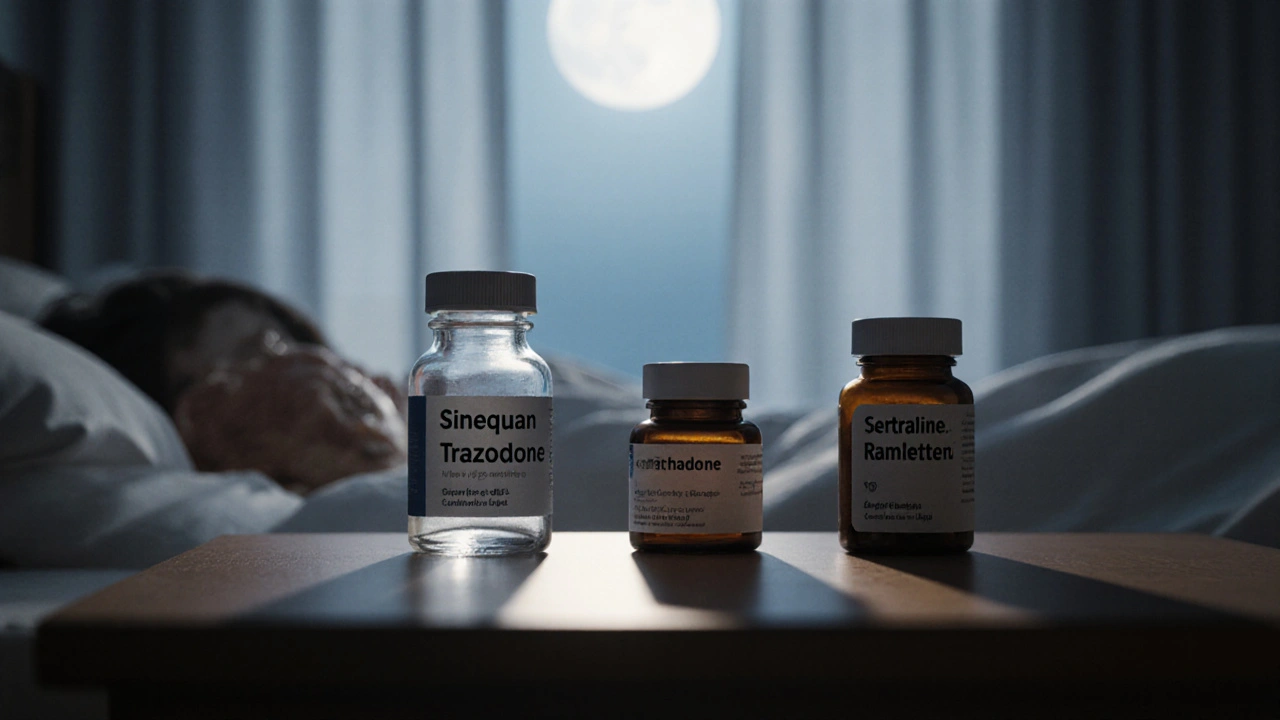Doxepin – What It Is and Why It Matters
When working with Doxepin, a prescription medication that belongs to the tricyclic antidepressant class and also acts as a powerful antihistamine. Also known as Silenor, it is used for both mental health and dermatology needs. Understanding its dual nature helps you see why doctors prescribe it for mood, sleep, and itch relief.
One major family Doxepin sits in is the tricyclic antidepressants, a group that works by boosting serotonin and norepinephrine levels in the brain. This boost reduces depressive symptoms and can also calm anxiety. At the same time, Doxepin’s antihistamine side belongs to the antihistamine category, blocking H1 receptors that trigger itching and allergic reactions. Because it wears two hats, Doxepin can treat chronic pruritus, especially in older adults, without the heavy sedation of older antihistamines.
How Doxepin Helps with Insomnia and Skin Conditions
When you need a sleep aid that doesn’t feel like a powder, Doxepin shines. Low‑dose formulations (often 3–6 mg) target the histamine pathway that keeps you awake, letting you drift off without the grogginess of traditional sedatives. In clinical studies, patients reported better sleep onset and fewer nighttime awakenings, making Doxepin a preferred option for people with trouble staying asleep.
On the skin side, Doxepin’s antihistamine action reduces the itch signal that travels from nerve endings to the brain. For conditions like eczema or chronic urticaria, a daily dose can calm the flare‑ups that other creams fail to control. Dermatologists appreciate that it also has mild anti‑inflammatory effects, which can lessen redness and swelling.
Safety is a big part of the conversation. Because Doxepin is a tricyclic, it can affect heart rhythm, especially at higher doses. Doctors usually start patients on a low dose and monitor ECG results if there’s a history of cardiac issues. Common side effects include dry mouth, mild dizziness, and weight gain, but most people adjust within a few weeks. It’s also important to avoid alcohol, which can intensify sedation and increase the risk of falls.
Beyond mood, sleep, and itch, Doxepin finds niche uses. Some pain specialists prescribe it off‑label for neuropathic pain because the same neurotransmitter pathways it modulates can dampen nerve‑related discomfort. A handful of studies also suggest it may help with certain anxiety disorders when combined with therapy, thanks to its calming effect on the central nervous system.
If you’re considering Doxepin, talk to your pharmacist about how to take it correctly. The drug should be swallowed whole with water, usually at bedtime for sleep indications or in the morning for depression. Consistency matters – taking it at the same time each day keeps blood levels stable and reduces side‑effect spikes.
Below you’ll find a curated collection of articles that dive deeper into each of these topics. From dosage guides and side‑effect checklists to real‑world comparisons with other antidepressants and antihistamines, the posts give you actionable insights you can use right now. Whether you’re a patient, a caregiver, or a healthcare professional, the information is organized to help you make informed choices about Doxepin.

